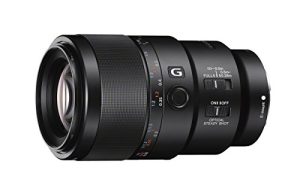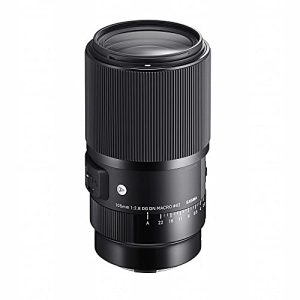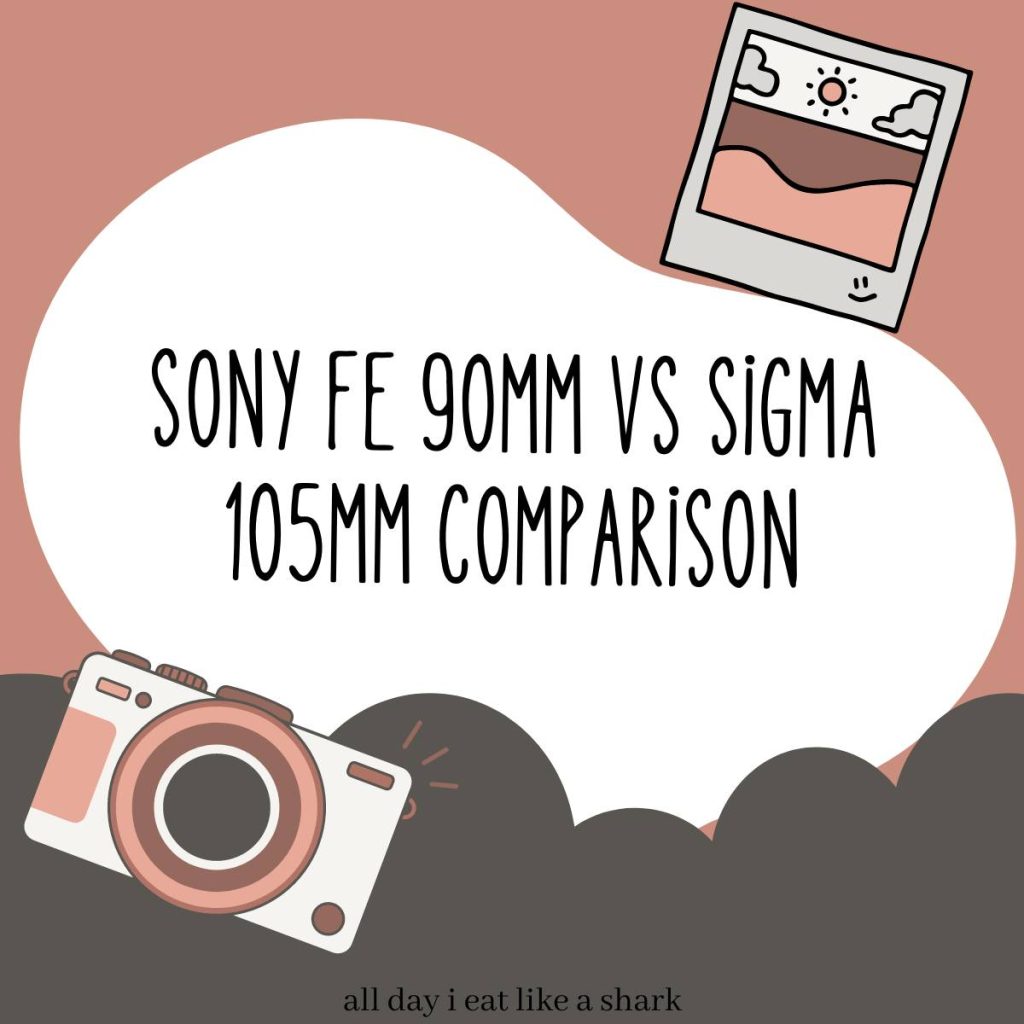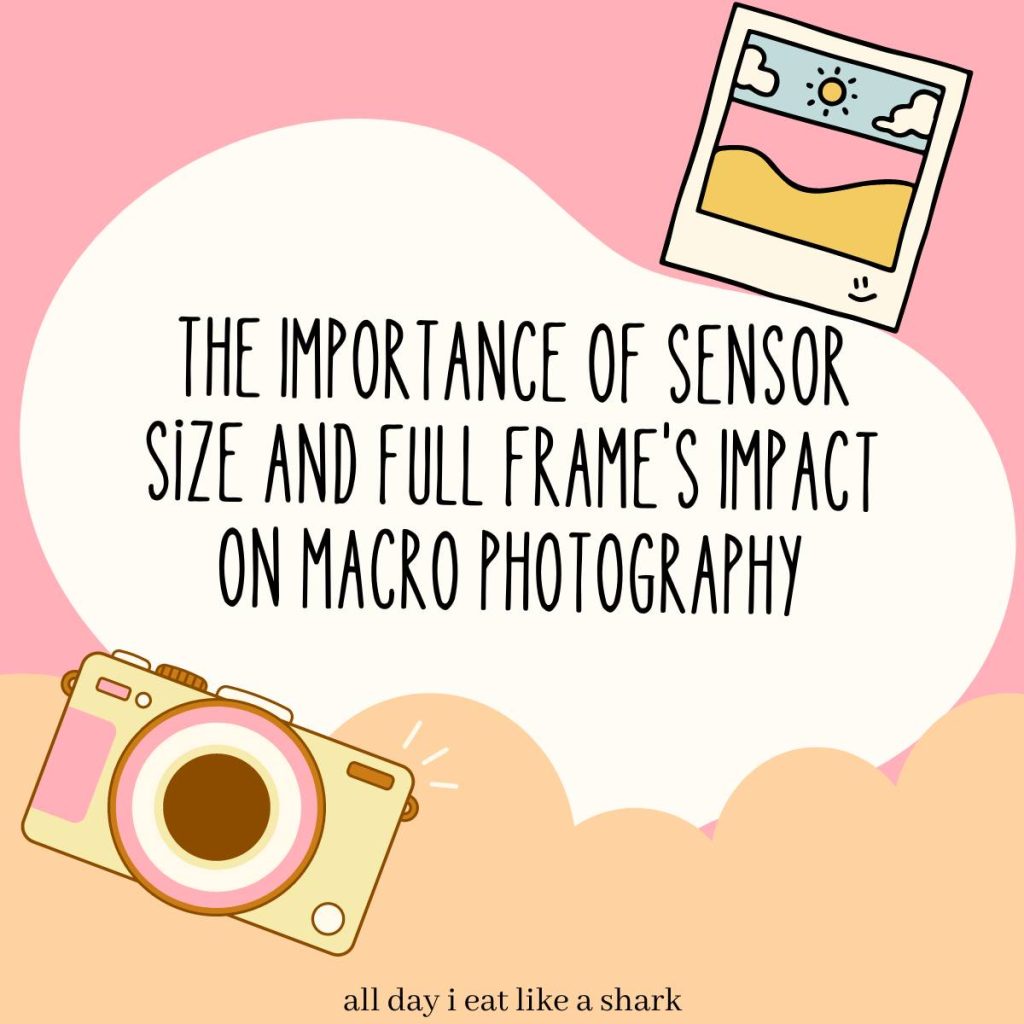Macro lenses are specialized lenses that can capture extreme close-up images of small subjects, such as insects, flowers, or jewelry.
They can reveal fine details and textures that are invisible to the naked eye, and create stunning images with shallow depth of field and smooth bokeh.

Sony FE 90mm vs Sigma 105mm
Two of the most popular macro lenses for Sony E and Leica L mount cameras are the Sony FE 90mm and Sigma 105mm.
Both lenses offer a 1:1 magnification ratio, a fast f/2.8 aperture, and a high-quality build and performance.
But how do they compare in terms of features, specifications, image quality, and price?
Which one should you buy for your macro photography needs?
In this article, we will compare these two lenses in detail and help you decide which one is better for you.


Features and Specifications
The table below summarizes the main features and specifications of the Sony FE 90mm vs Sigma 105mm.
| Feature | Sony FE 90mm f/2.8 Macro G OSS | Sigma 105mm f/2.8 DG DN Macro Art Lens |
|---|---|---|
| Mount | Sony E, Leica L | Sony E, Leica L |
| Full frame | Yes | Yes |
| Autofocus | Yes | Yes |
| Image stabilization | Yes | No |
| Lens construction | 15 elements in 11 groups | 17 elements in 12 groups |
| Angle of view | 27 degrees (full frame), 17 degrees (APS-C) | 23.2 degrees (full frame), 15.4 degrees (APS-C) |
| Diaphragm blades | 9 | 9 |
| Minimum aperture | f/22 | f/22 |
| Minimum focusing distance | 0.28m | 0.295m |
| Maximum magnification ratio | 1.0x | 1.0x |
| Filter size | 62mm | 62mm |
| Dimensions | 79 x 131mm | 74 x 134mm |
| Weight | 602g | 715g |
| Price | Higher | Cheaper |
As you can see from the table, the two lenses have similar features and specifications, with some minor differences.
Image Stabilization
The Sony lens has an optical image stabilizer (OSS), which can help reduce camera shake and blur when shooting handheld or in low-light situations.
The Sigma lens does not have image stabilization, so you will need to rely on your camera’s in-body image stabilization (IBIS) or use a tripod for sharper images.
Focal Length
The Sigma lens has a slightly longer focal length (105mm vs 90mm), which can give you a slightly narrower angle of view and a slightly longer working distance (the distance between the front of the lens and the subject at the minimum focus distance).
This can be useful for avoiding shadows, reflections, or disturbing the subject, especially when shooting insects or other live creatures.
Optical Performance and Weight
The Sigma lens also has two more lens elements than the Sony lens (17 vs 15), which can affect the optical performance and quality of the lens.
The Sigma lens also weighs more than the Sony lens (715g vs 602g), which can make it less portable and more cumbersome to carry around or use for long periods.
Pricing
The Sony lens is more expensive than the Sigma lens, which can be a significant factor for beginners or hobbyists who have a limited budget.
However, the Sony lens also has some advantages over the Sigma lens, such as image stabilization, a focus limiter switch, an aperture lock switch, a customizable focus hold button, and weather-resistant construction.
Image Quality
Sharpness, Contrast, and Overall Image Quality
Both lenses deliver excellent image quality in terms of sharpness, contrast, color rendition, distortion, vignetting, flare, and bokeh.
They are both very sharp across the frame, even at wide-open apertures.
They also have minimal chromatic aberrations and field curvature. They also handle diffraction well up to f/16.
Bokeh and Out of Focus Rendering
The bokeh quality of both lenses is smooth and pleasing, thanks to their fast f/2.8 aperture and 9-blade circular diaphragm.
The out-of-focus areas are rendered softly and naturally, especially at close distances and wide apertures.
Distortion, Vignetting, Flare Resistance, and Lens Coating
The distortion and vignetting of both lenses are very low and can be easily corrected in post-processing or by applying lens profiles.
The flare resistance of both lenses is also very good, thanks to their anti-reflective coatings and lens hoods.
The Sigma lens has a fluorine coating on its front element, which repels water and grease and makes it easier to keep clean.



Konnichiwa! (Hello!) I'm Pat Tokuyama, a Japanese tofu cookbook author, who travels for music, food, and adventure. If you like Japanese tea, checkout some of the newestorganic japanese tea, matcha bowls and noren and more!
** Curious about the Plant Based Japanese Cooking Club? ** Learn more here!
Focal Length and Its Impact on Perspective and Depth of Field
The main difference between the two lenses in terms of image quality is the focal length.
The Sigma lens has a slightly longer focal length (105mm vs 90mm), which can affect the perspective, compression, and depth of field of the images.
The Sigma lens can create a slightly more flattering perspective and compression effect for portrait photography, as well as a slightly shallower depth of field for isolating the subject from the background.
The Sony lens can create a slightly wider angle of view and a slightly deeper depth of field for capturing more of the scene or keeping more of the subject in focus.
Conclusion
The Sony FE 90mm vs Sigma 105mm are both excellent macro lenses that can capture stunning close-up images of small subjects.
They both offer a 1:1 magnification ratio, a fast f/2.8 aperture, and a high-quality build and performance.
The choice between the two lenses depends on your personal preferences, needs, and budget.
If you want a more versatile lens that can perform well in different situations and for different subjects, especially if you shoot handheld or in low-light situations, you may prefer the Sony lens.
If you want a more specialized lens that can create a more flattering perspective and compression effect for portrait photography, as well as a shallower depth of field for isolating the subject from the background, you may prefer the Sigma lens.
Both lenses are highly recommended for macro photography enthusiasts who use Sony E or Leica L mount cameras. You can’t go wrong with either of them.







Konnichiwa! (Hello!) I'm Pat Tokuyama, a Japanese tofu cookbook author, who travels for music, food, and adventure. If you like Japanese tea, checkout some of the newestorganic japanese tea, matcha bowls and noren and more!
** Curious about the Plant Based Japanese Cooking Club? ** Learn more here!